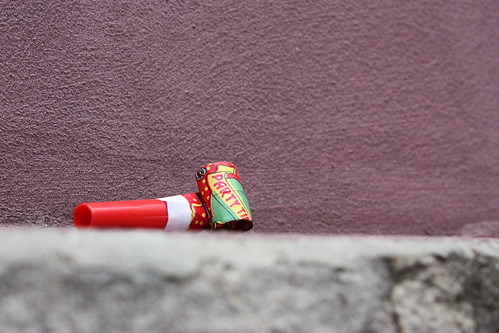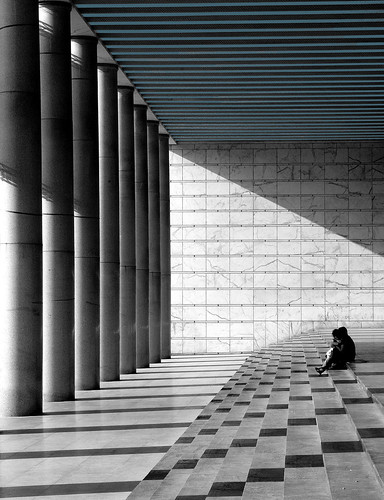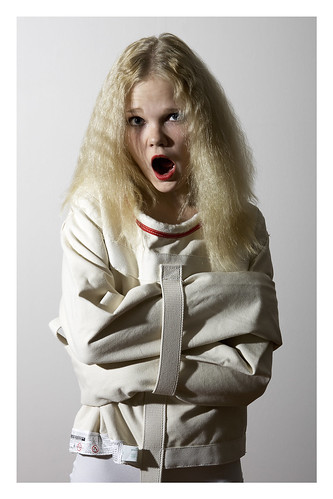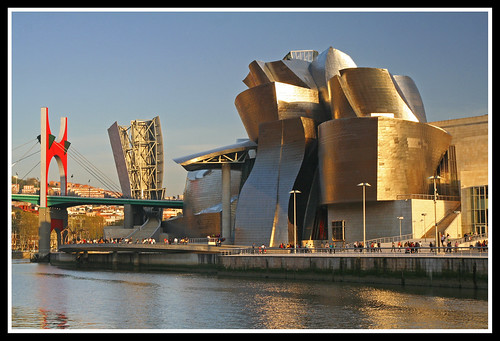Friday, February 13, 2009
Traffman has moved
Thursday, February 12, 2009
Advertising: The Wedding
Creepy yet powerful campaign by WhybinTBWA for Adult Survivors of Child Abuse. As the ad says, "if only it were this easy to get over child abuse".
Selling: Elizabeth Bay #2
 Shortly after last week's post on the fabulous waterfront apartment in Elizabeth Bay for sale with McGrath, Belle Property have listed a little brother version next door.
Shortly after last week's post on the fabulous waterfront apartment in Elizabeth Bay for sale with McGrath, Belle Property have listed a little brother version next door.In theory, this apartment lets you can drop a kayak into the harbour from your living room, go for a paddle, and come back for an espresso on the deck before strolling to work.
In reality, I know that even with such an amazing view, I'd still wake up as late as possible, pee in the shower to save a few minutes, and rush out the door with a piece of cold toast in hand, and odd socks on my feet. At least I could enjoy the view on the weekends, though.


Reminiscing: EUR
It is a cold, dark December night in Rome, and I am on the grubby subway heading to Esposizione Universale Roma, or EUR, on the southern outskirts of the city, to attend a jazz concert by the sublime Brazilian artist, Cibelle. I arrive at EUR Palasport station, and am the only person to alight. I hurry upstairs into the wide Viale America and began the 10-minute walk to the concert, held in a school auditorium. Prostitutes lean against light poles, while scowling Romans in trench coats sit in their cars, cigarette in hand, browsing the ‘goods’ on display.
The wind blows across the lake, a striking contrast to the narrow, winding streets of Old Roma.
I am hungry. A pizzeria and a patisserie are open, their fluorescent glow forming halos through the foggy night sky, but they are completely empty, and I dare not enter.
I pass the imposing Banca di Roma building, which stands in darkness, a wall of glass. Some drunk teenagers pass in the opposite direction, slurring something in Italian, and I quicken my pace just a little.
I walk up the steps to the top of the hill where the auditorium sits. They are covered with slippery leaves, so I grasp the railing with one hand. A toad jumps across my path, startling me.
I finally arrive at the auditorium. A group of well-dressed Romans stand outside, chatting, laughing, smoking.
The concert is superb. Cibelle sings with the combination of sultriness and sass that I so love. Her band is funny,
When I get back to my hotel I am told that EUR is notorious for its crime, particularly for public brawls between neo-Fascist and Communist groups, and local gangs.
Still, I return the next day, eager to experience this fascinating place in daylight. I spend a good half-day walking around, photographing the monolithic structures, and drinking espresso.
EUR was conceived in the late 1930s by Fascist dictator Benito Mussolini as an out-of-town business district that would help direct the growth of Rome towards the Mediterranean sea. After Mussolini’s execution in 1945, the area continued to develop according to his original vision throughout the 1950s and 1960s, making EUR today the site of one of the finest collections of Fascist-era architecture in the world. When in EUR, you experience what Italy might have looked and felt like had it remained under Fascist rule.
It has shades of Paris’s LaDefense, and London’s Docklands. If you squint, it even feels a little like Canberra. But for me, EUR will remain in my memory as a surreal, cold, yet strangely lovable part of Rome.
Looking: Maps as art
 I love maps. Always have. For as long as I can remember, sketching maps has helped me survive countless exams, boring church services, and slow days at work. On long car trips, I would browse the street directory, following our journey and trying to guess what the destination would be like. I quickly learnt that straight lines equal flat terrain, wobbly lines mean it's either hilly or an old part of town, and sphaghetti shapes probably means it's going to be a newer McMansion suburb. I also learnt that the messier the map looks, the worse the traffic will be (take Sydney or London as a case in point).
I love maps. Always have. For as long as I can remember, sketching maps has helped me survive countless exams, boring church services, and slow days at work. On long car trips, I would browse the street directory, following our journey and trying to guess what the destination would be like. I quickly learnt that straight lines equal flat terrain, wobbly lines mean it's either hilly or an old part of town, and sphaghetti shapes probably means it's going to be a newer McMansion suburb. I also learnt that the messier the map looks, the worse the traffic will be (take Sydney or London as a case in point).
I haven't quite figured out why I love them so much. It could be the sense of discovery; the sense of finding somewhere new. Maybe it invokes a desire to travel and explore new places, a sort of abstract armchair travel. Perhaps it's simply a subconscious effort to escape wherever I am at that particular moment. Or it could just be that I like the look of them.
Several artists find maps similarly inspiring. The above work, Matrix by Emma Johnson, creates deconstructed maps using recycled materials, symbolising the tangible yet ambiguous nature of communication and transportation networks.
Another example is the late Burt Hasen, who was a soldier in World War II. Hasen's time spent reading maps on the field inspired him to spend the rest of his life creating cartographic art, such as Convulsive Coupling (below).

Monday, February 9, 2009
Thinking: Straightjackets
Straitjacket, originally uploaded by Prettyspot.
While watching the incredible film Changeling on the weekend I was struck with the terror that must be felt by people who are put into a psychiatric institution, knowing they don't have a problem, but unable to convince their 'minders' otherwise.
Caroline Collins was placed into psychiatric care by the LAPD, after she tried to uncover a mistake they had made in the search for her missing son. Not wanting to be embarrassed by the mistake, the LAPD instead claimed Caroline had lost her mind. It wasn't the first time they had tried to lock up a troublemaker in this way.
Upon Caroline's admission to the institution, a patient in a similar situation gives her the following advice: "If you smile too much, you're delusional. If you don't smile, you're depressed. If you remain neutral, you're emotionally withdrawn."
Of course Caroline tries to convince the head doctor and nurses that it is all a terrible mistake. You'd have to at least try. But after they put her in a straightjacket and take her struggling body to 'Room 18', she finally realises that nothing she says or does will help her escape: her fate is sealed and whatever she says will be used against her as further evidence of her unsound mind.
In the end, Caroline chooses the frank yet appropriate response to the doctor who 'framed' her: "Fuck you and the horse you rode in on." And I think that's exactly what I'd say too.
Looking: Tobias Rehberger
 Why are Germans always the kinky ones? Tobias Rehberger is an installation and performance artist who sometimes dabbles in other media, such as photography. His work drips with satire, such as Untitled (above), which parodies Fergie's oh-so-90s toe-sucking antics, albeit with a cuter guy, and fluoro cardboard cutouts.
Why are Germans always the kinky ones? Tobias Rehberger is an installation and performance artist who sometimes dabbles in other media, such as photography. His work drips with satire, such as Untitled (above), which parodies Fergie's oh-so-90s toe-sucking antics, albeit with a cuter guy, and fluoro cardboard cutouts.Rehberger's installation piece, the cheekily titled Lying Around Lazy, Not Even Moving for Coke, Sweets, TV or Vaseline, (1999 version), is kinky in a different way, because it sets out to deliberately reverse the usual artistic process. Usually, artists generate an artistic vision first, then execute this vision to be later enjoyed by the viewer. In this instance, Rehberger asked his friends what they would like in their ideal apartment. He then sought to recreate their vision without giving any input or feedback on what he thought of the idea. Similar to how bloggers created the plot for 'Snakes on a Plane' (but with much better results).
So what's my point? I guess what I'm saying is that Germans are kinky. That's all. I rest my case.

Sunday, February 8, 2009
Quoting: Henry David Thoreau
 Picture by David Burdeny whose long-exposure nature shots so beautifully depict the true meaning of simplification, like the above photo of Canadian wheat fields.
Picture by David Burdeny whose long-exposure nature shots so beautifully depict the true meaning of simplification, like the above photo of Canadian wheat fields.
Building: What is wow?
John Prescott, Tony Blair's deputy prime minister, and responsible for urban planning in the UK throughout the early 2000s, was continually asked, "What is wow?". His response? "It's buildings that strike you and you say, 'bloody 'ell'".
Prescott, in his typically raw manner, has described what has gradually become architectural consensus over the past decade-or-so. For architecture to be good, we are told, it needs to be so spectacular, so radical, so mind-blowing, that we should unanimously say "bloody 'ell". And many buildings elicit exactly that response - great buildings like PTW's Water Cube, Foster's Gherkin or Gehry's beautiful but ridiculous aluminium franchises that have sprung up everywhere from LA to Bilbao (there was even talk of him building one in Geelong, for chrissakes).
For me, 'wow' doesn't have to equate to spectacular. A perfect example is Casey Brown's Mudgee Tower. Here is a building that is small in proportion (only a 3 sqm footprint), yet with a wow factor beyond comparison. It's setting, sense of place and permanency, innovation and simplicity are what gives the Tower its 'wow' factor.
And if, when viewing such a building, you still say "bloody 'ell", then so be it.



Thinking: Position Vacant

Go to any careers advisor and they will tell you that in order to be happy in life you need to follow your dream. "If you find your dream job, you'll never work a day in your life". Blah blah blah. Does anyone actually believe this? And if it is true, how do you even know what your dream job is?
One tip that is common in self-help books, web forums, et al, is to have a go at writing your ideal job ad. The kind of ad that, if you saw it in the newspaper, would excite and inspire you, because you would know it is YOUR dream job.
So here's mine:
Mildly creative yet vague and directionless individual wanted to research current trends, browse bookshops and art galleries, read newspapers and magazines and occasionally cook a gourmet meal.
This is a new position so the final outcomes are not yet clear, however it is expected that you some photography and writing skills are advantageous, as is a business degree. Must be computer literate and possess superior people and communication skills.
A generous remuneration package, expense account, and extensive travel opportunities are on offer to the successful candidate.
This position will be based at home so you must have office space, the desire to work alone and the discipline to set your own hours.
So what do you think - am I asking too much?
Looking: Iwan Baan

 Iwan Baan is a Dutch photographer best known for his work with OMA/Rem Koolhaas. Obviously, this means he has plenty of divine architecture to use as material. But Baan goes beyond simply photographing buildings, and combines people and place in a way that few other photographers manage.
Iwan Baan is a Dutch photographer best known for his work with OMA/Rem Koolhaas. Obviously, this means he has plenty of divine architecture to use as material. But Baan goes beyond simply photographing buildings, and combines people and place in a way that few other photographers manage.Thursday, February 5, 2009
Thinking: Landfill
 It's hot in Sydney. Maybe not as hot as Melbourne but still hot. Hot enough to lose sleep at night if you don't have the luxury of air-con, or the poor man's equivalent, a fan. So I bought one for the princely sum of $12.59.
It's hot in Sydney. Maybe not as hot as Melbourne but still hot. Hot enough to lose sleep at night if you don't have the luxury of air-con, or the poor man's equivalent, a fan. So I bought one for the princely sum of $12.59.Once I finished interpreting the chinglish assembly instructions, and recovering from a flying nut that flew out when I first turned the thing on, I began to feel guilty. Guilty with the knowledge that, one day, that fan will end up in landfill, along with the hundreds of other fans that were running out the door today at Target.
The environment has been on my mind since watching a recent episode of the brilliant Mad Men. Set in the 1950s, the show often depicts things you just don't see any more, like smoking housewives, black maids, and the like. In this episode, the Draper family are having a picnic. When they decide to leave, they simply shake their rubbish-laden picnic rug onto the lawn, jump into their Oldsmobile, and drive off.
For some reason, this really shocked me, that people from my parents generation used to do this to our planet. My first reaction was that it was unsophisticated, even primitive, but I quickly realised that in almost 60 years, we haven't changed that much. We were trashing our planet in the 50s with debris from our picnics, and we rubbish it today with twelve dollar fans from China.
And what's even worse is that I try to relieve my guilt by blogging about it, like somehow it negates the fact that I am also part of this unstoppable beast.
Eating: Ritter Sport
 100g squares of pure joy, wrapped in cute and clever packaging.
100g squares of pure joy, wrapped in cute and clever packaging.I had my first Ritter while travelling through Europe. Ever since, I've been having a secret love affair. My fave is the Whole Hazelnuts, although the Praline is a close second.
And any chocolate company that can get away with having the word 'Sport' in their name is worthy of adoration.
Wednesday, February 4, 2009
Designing: When architects become their city
 For a select few architects, their work somehow becomes indistinguishable from the city itself. While they may practice in many cities, their work always conveys a particular setting. Think of Norman Foster in London (so very nouveau British), Richard Neutra in Los Angeles (total LA cool), Denton Corker Marshall in Melbourne (all those sticks!).
For a select few architects, their work somehow becomes indistinguishable from the city itself. While they may practice in many cities, their work always conveys a particular setting. Think of Norman Foster in London (so very nouveau British), Richard Neutra in Los Angeles (total LA cool), Denton Corker Marshall in Melbourne (all those sticks!). 




As both Seidler and Engelen Moore are no longer practicing, the question arises: who will take their place? Who will become the next architect to convey what Sydney in the 21st century is all about?
Pondering: Tattoo or not tattoo

Every time I go on holidays I tell myself that, this time, I will get a tatt. But when push comes to shove I either don't have the balls to go ahead with it, or I'm too afraid of my mother's reaction when I next see her. Probably a combination of both.
My other challenge is to answer the age-old questions of 'What?' and 'Where?'. I can't even find a shirt that I like in a week's time, let alone a motif that will mean something and not make me look tragic when I retire in 2048. And don't get me started on the location of said tattoo - will one on the arm make me look like a Cronulla local; the chest too much like a bra boy? It's all too hard.
Anyway, I think I've turned cold on the idea after reading Fecal Face's article on DIY-tattoos while eating today's lunch. I've never really thought of the actual process of tattooing, the act itself, but after doing just that, I'm not so sure. Fundamentally, DIY tatts are no different from what you get in a professional tatt house, but for some reason the idea of attaching a home-sterilised needle to the end of a pencil, dipping it into ink, and sticking hundreds of tiny holes into the back of my arm seems a little too grotesque.
So maybe it's not my lack of balls, my disapproving mother, or my issues about what and where. Maybe I'm just not a tatt kind of guy after all.
Selling: Elizabeth Bay
 Sydney has thousands of apartments with harbour views, but there are not many that get as close to the water's edge as this gem at 1/79 Elizabeth Bay Road, Elizabeth Bay.
Sydney has thousands of apartments with harbour views, but there are not many that get as close to the water's edge as this gem at 1/79 Elizabeth Bay Road, Elizabeth Bay.It's currently listed through McGrath. I see it from across the harbour every evening while walking the dog and have always thought it is such a special site - with the blue expanse of Sydney Harbour rolling off the balcony.
I have no idea what the asking price is but the auction on February 28 will reveal how many buyers in Sydney are still in the market for a premium waterfront property in these "difficult times". If that is you, you could potentially pick it up for a steal. The rest of us, sigh, will have to keep on dreaming.
Tuesday, February 3, 2009
Travelling: Japan
 I've always wanted to visit Japan. Despite Sensei Graetz's abhorrent teaching methods in Grade 5 Japanese lessons, the land has always held a certain allure, with travellers telling tales of vending machines that stock everything from hot coffee to women's underwear; fish markets where you can have sushi and beer for breakfast; and a Bladerunner-esque cityscape.
I've always wanted to visit Japan. Despite Sensei Graetz's abhorrent teaching methods in Grade 5 Japanese lessons, the land has always held a certain allure, with travellers telling tales of vending machines that stock everything from hot coffee to women's underwear; fish markets where you can have sushi and beer for breakfast; and a Bladerunner-esque cityscape.Unfortunately, the ridiculous AUD to JPY exchange rate - which has plummetted in the past six months as the below graph shows - means that it will be a while before I can afford a trip to the Land Of The Rising Sun. I could visit Honkers, Taiwan or Shanghai to try and replicate, whose currencies have marginally better exchange rates, but I'm sure it wouldn't be quite the same.

By the way the top pic is by Nicholas Vroman, a fine arts photographer who takes the most amazing pics of Japan. Nicholas is currently the Featured Artist in F-Stop e-zine.
(The bottom pic is available from any currency exchange provider and is enough to depress any travel-hungry Australian).



